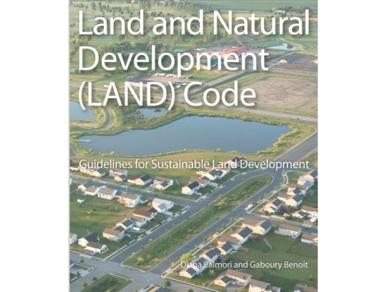It's a cliché often spouted by real estate agents: "Land…they ain't making any more of it."
When a real estate agent says we're running out of land, he/she has a different reaction from the 99% of us not involved in real estate. He/she sees it as an urgent call to buy up the remaining land, or a great way to maximize the value of land on which his/her shoddy condos are built. The rest of us are affected in various ways. Some oversensitive types see it as an omen of the planet's demise. Most people just swallow it as part of the anxiety of modern living. "What? The dairy farm is now a subdevelopment? Too bad."
However, the real estate agent has a point. Largely due to false steps, cheap tricks and monumentally stupid planning by the real estate cartel—from agents to developers to local and regional land planners and commissions, many members of which have vested interests in the outcomes—we live on a planet so unsustainably engineered by human hands that we are indeed running out of land. At least good land, the sort developers covet and then cover with impervious surfaces atop which they plop mega-mansions or malls—speculative ventures few people living nearby want and no one really needs.
How badly have we treated the land? The U.S. has 44,000 square miles of impervious surface, an area the size of Ohio. Literally nothing can flow through this surface, so it flows off, carrying whatever pollutants have accumulated. The "highly urbanized" area of the U.S. is the size of Tennessee, Pennsylvania, Ohio and Virginia combined. You don't believe me? Drive east from Hartford and behold the nightmare of Vernon or east from Northampton on Route 9 and behold the growing eyesore of Hadley. Drive west from Hartford and behold bucolic Corbin's Corner. My point: drive anywhere and look hard enough and you'll see it. (Yet another reason to end road-building; where there is a road, there is development).
Enter two experts who aim to change the equation with one book. Diana Balmori, an urban planner who teaches at the Yale School of Architecture, and Gaboury Benoit, a dean at the Yale School of Forestry and Environmental Studies, have published the results of years of collaboration: Land the Natural Development (LAND) Code: Guidelines for Sustainable Land Development (John Wiley).
These two visionary authors start with the premise that, as much as the rest of us bitch and moan about the desecration of our natural world, land will be developed. Better yet, desecrated land will be redeveloped properly. Through a clearly argued and well-illustrated text, they take the prospective developer step by step through the process, from pre-groundbreaking site plans to land maintenance after the fact. Each step of the way, they offer alternatives to the old broken ways of doing things that not only preserve some of the land's natural integrity, but enhance the bottom line. Among the many things that bring some solace are the ready availability of new technologies like green roofs, pervious parking lots, rain gardens and rain collecting systems, as well as alternative energy options and tax incentives.
Benoit and Balmori are pros. Who knows? Maybe they've discovered some streak of public-spiritedness (heretofore unknown to me) in developers. My experience as a member of a town commission is that developers do nothing voluntarily for the good of the environment, and they view environmentally informed residents as mortal enemies. I would like to think they'd be environmentally responsible because it's the right thing to do. Where I differ from the authors is that I think their suggestions should be mandatory, not "recommended."
The book also raises some larger, more macro questions, like: Can you really engineer an improved environment? This "LAND" code is undeniably a good thing, but is it too little too late? Is it a pipe dream to think towns, regions and even states can establish developmental moratoriums, can just say no? What do developers "owe" a community?
We will all be discussing these questions in the future. After all, they ain't making any more land..
Email editor@valleyadvocate.com.



